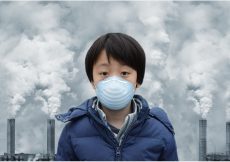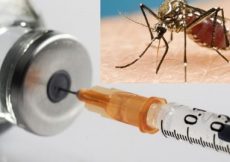May 25th, 2022
May is Asthma and Allergy Awareness Month
65 million people living in the United States are affected by allergies or asthma, or both — two diseases that have excellent treatments but no cure. According to the Asthma and Allergy Foundation of America:
• About 25 million Americans have asthma (20 million adults and 5 million children)
• About 32 million Americans have food allergies (26 million adults and 6 million children)
• About 24 million Americans have rhinitis (hay fever), or nasal allergies (19.2 million adults and 5.2 million children)
Allergies are the sixth leading cause of chronic illness in the U.S. and one of the most common health problems affecting children. After being inhaled, ingested, injected, or touched, foreign proteins called allergens can trigger the immune system to react by releasing chemicals like histamine that can cause discomfort (itchy and watery eyes, runny nose, sneezing, coughing, scratchy throat, hives), difficulty breathing (a symptom of asthma), and even death in cases of anaphylaxis.
The most common outdoor allergens that trigger seasonal allergy symptoms (“hay fever”) in the spring and fall include pollens from trees, grass, and weeds. About 24 million Americans — 8% of adults and 7% of children — suffered from hay fever in 2018. White children are more likely to have hay fever than Black children.
Mold spores, dust mites, cockroaches, and dog and cat dander are common indoor allergens that cause allergic misery in sensitive people.
Indoor and outdoor allergens are common triggers of asthma in children and adults. Other common environmental triggers include cigarette smoke, wood smoke, outdoor air pollution, ozone-forming nitrogen oxides, and chemical irritants. Exposure to any of these items can cause inflammation and swelling of the tiniest airways in the lungs, resulting in the typical symptoms of asthma: coughing, wheezing, trouble breathing, and chest pain.
Asthma is a common and costly disease. In the U.S. asthma rates are highest in Black adults. The rate of asthma in Black children is nearly three times higher than in White children, and the risk of dying from an asthma attack is eight times higher in Black children. More boys carry a diagnosis of asthma than girls; in adults, the reverse is true with more women diagnosed than men.
According to AAFA, in 2019, 44% of children 18 and under with a diagnosis of asthma had one or more acute asthma exacerbations. It’s estimated that half of children with asthma have uncontrolled asthma. Data from the National Institutes of Health indicate that each year in the United States, asthma leads to:
• 1.6 million emergency room visits
• 179,000 hospitalizations
• 10 million doctor visits
• 14 million missed school days
• 3,400-4,100 deaths.
Many people don’t appreciate one important source of indoor air pollution: gas stovetops. Burning natural gas in the kitchen and elsewhere creates a plume of potentially harmful pollutants. Nitrogen oxide, sulfur dioxide, and fine particulate matter (PM2.5) irritate airways and aggravate chronic lung diseases like asthma, increasing susceptibility to respiratory infections (COVID-19, for example) and the risk for hospitalization. PM2.5 and formaldehyde increase cancer risk. Carbon monoxide far exceeds federal standards when gas stoves are used. CO is toxic to every human who breathes it. Symptoms include lightheadedness, headaches, nausea, and vomiting. Exposure can cause brain damage, cardiac dysfunction, and death. And carbon dioxide (CO2) is, of course, the principle greenhouse gas responsible for the climate crisis. It’s important to note that all of these dangerous air contaminants are invisible.
Research shows that cooking with gas stoves increase the risk of asthma diagnosis in children by as much as 42%! Inner-city children and low-income households are more at risk, making this an environmental justice issue.
Improving ventilation by using exhaust fans above the stovetop and ducted outside helps prevent household exposure to the toxic byproducts from burning natural gas. Not using exhaust fans leads to poorer lung function and 1.5 times higher odds of asthma, wheeze, and bronchitis.
Practical solutions if you do have a gas stovetop:
• Use proper ventilation with a hood venting to the outside every time you cook.
• Use only the back burners to make sure the hood captures most of the emissions.
• Open windows and doors when using a gas cooktop.
• Use a portable HEPA air purifier to help remove fine particulate matter (PM2.5).
• Consider switching to an electric stovetop or using a portable induction burner. (There is actually no burning involved with electromagnetic induction cooking.)
• Always have a working carbon monoxide monitor near the kitchen.
Read more on the health effects of gas stoves in a report from Physicians for Social Responsibility here.




































